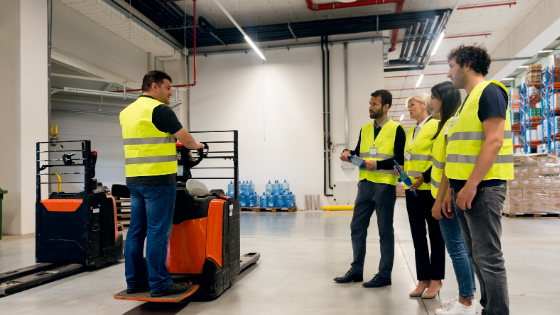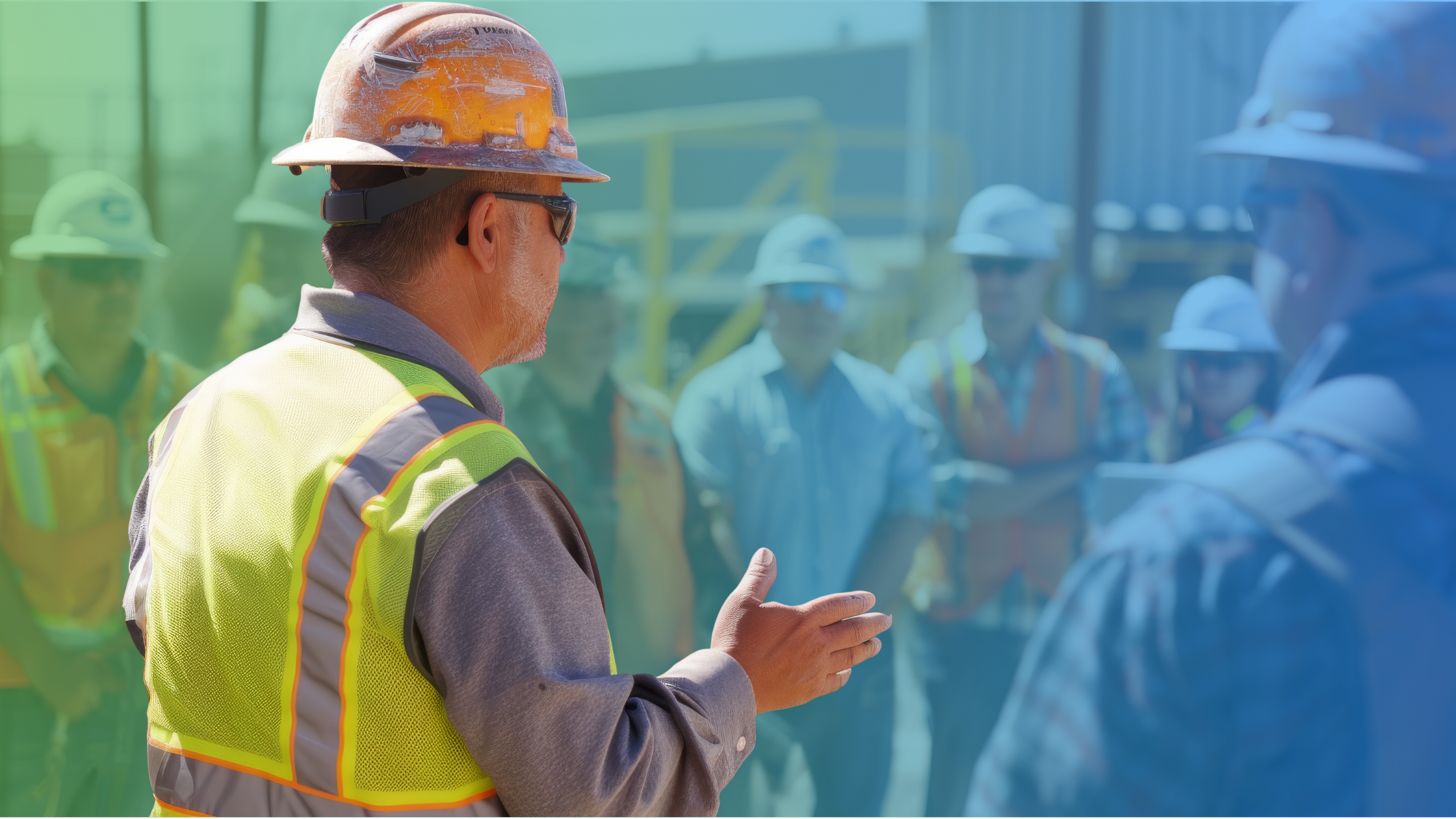Workplaces in all industries strive for operational efficiency because it’s what will help the company’s bottom line in the long run.
At the same time, workplace safety also needs to remain a focal point. Oddly enough, there is a strong relationship between safety and efficiency that not all businesses recognize. More often than not, what’s best for workplace safety is also what’s best for overall operational efficiency, which in turn is good for the bottom line. Let’s explore the link between operational efficiency and safety and why some safety practices ultimately lead to better operational performance.
Connecting Efficiency to Safety
Proper Safety Training
Far too many companies look at safety training as a waste of time or something that’s just a requirement that needs to be done. But it can be so much more than that; it just requires a commitment to giving employees proper safety training and going about it the right way. As we’ll see later, there is a clear cost when accidents occur because employees weren’t given proper safety training.
However, safety training can also be used to improve employee performance. It can teach employees how to do their jobs in ways that are both safe and efficient. It can help them to sharpen the skills they already have. Safe employees ultimately become better employees because they see things from all angles. Safety training can give workers a greater appreciation for how to do their jobs properly, which will only make them better at their jobs.

Correct Use of Equipment
Using equipment, the way it was intended to be used sounds rather basic. However, both workplace safety and operational efficiency are both about doing the basics right. This also relates back to safety training because employees need to be taught the proper way to use certain pieces of equipment while also being told not to use them for tasks other than what they’re intended to do. When employees go off-book with how they use equipment, an accident is more likely.
At the same time, it’s usually not a good sign for overall efficiency if employees are using a tool for an unintended purpose. Tools and equipment will be more likely to break down or malfunction if they are used for something they weren’t designed to do. If incorrect use of equipment causes a malfunction, there is a good chance it’ll either lead to an accident or need to be repaired. In either case, it’s bad news for the business.
Staying Organized
It shouldn’t be hard to figure out that companies that are more organized are more efficient. But the same logic applies to workplace safety. This is particularly true in warehouse settings and other areas that involve storing and moving around products. If these areas are well-organized and products are kept where they are supposed to be, there will be limited errors and efficiency will go sky-high.
Likewise, the movement of employees will be more predictable and workers will be less stressed. In turn, this will lead to fewer accidents because workers will know exactly what they have to do and won’t be concerned with trying to make up for lost time or rushing to get something done, which can make a mistake or safety accident more likely.
Staying Clean
Cleanliness and safety should be considered two sides of the same coin. Workplaces that are clean and free of clutter are going to have fewer hazards that can lead to slips, falls, and other types of preventable safety accidents. Likewise, cleanliness and efficiency can be considered two sides of the same coin as well.
Cleanliness helps to promote organization, which minimizes disruptions or surprises, which naturally improves efficiency. It shouldn’t be considered a stretch to think that companies that pay attention to details when it comes to keeping the workplace clean are also going to have good safety records and pay attention to key details when it comes to overall efficiency.
Constant Communication
Any company that preaches open and honest communication is bound to succeed in both safety and operational efficiency. Encouraging feedback from employees while also being transparent with them should help to improve all aspects of a business. Who better to offer suggestions than the people on the frontlines who are doing the hard work every day?
By being open and honest with employees, they won’t be hesitant to do the same. This will lead to feedback and open conversations that should lead to ideas that help improve workplace safety, operational efficiency, and other aspects of a business. But this only comes when fostering a culture where there is regular and open communication across all levels of a company.
Embracing Technology
Companies that are willing to embrace technology tend to do better with both safety and efficiency. There are technologies available that can help to automate aspects of both. For instance, there are safety management systems that can take the organization of safety management to another level. These systems help to manage risk, monitor hazards, and make sure training exercises are performed when needed.
Likewise, there is software that can track all aspects of operational efficiency within a company, making it easy to see where there are shortcomings that can be addressed. Some might even be able to spot safety lapses as well. The point is that by embracing technology, companies are better able to improve both the safety and operational aspects of their business.
The Cost of Safety Failures
Cost of Accidents
As we alluded to earlier, there are costs associated with workplace accidents. While some accidents are unavoidable, a significant amount of workplace accidents could have been avoided with proper safety training. These are the types of accidents that are costly to businesses in more ways than one.
For starters, if an employee is hurt on the job, the company will likely be on the hook for their medical expenses and workers’ compensation payments. If nobody was hurt but there was property damage, those costs would have to be paid by the company as well. On top of that, if the company was liable for the accident, perhaps because workers weren’t trained properly, they could be fined or vulnerable to lawsuits.
Needless to say, any or all of those costs can quickly add up. In the end, those costs will be far more than whatever productivity might have been lost while the business was providing employees with proper safety training. In that sense, doing what is best for the safety of employees is also going to be what’s best for the company overall, even if it may not seem like it at the time. In other words, safety training can be looked at as an investment in operating more efficiently and preventing huge costs that only hurt the company.
Post-Accident Downtime
On top of all of the money a company will have to pay after an accident, there is also lost revenue to consider. Following a workplace accident, there is usually a mess that needs to be cleaned up and possibly an investigation that needs to be conducted to figure out what went wrong. That might actually be the best-case scenario with the worst-case scenario being a formal inspection from a regulatory agency.
Either way, production is likely to be delayed to some extent. This can lead to missed deadlines or simply less available inventory to sell. Not only that, but employees will still need to be paid, even if they’re not able to do their jobs as usual and maintain their usual productivity. Again, that is almost the best-case scenario because it’d be even worse if a key piece of equipment was damaged and needed to be replaced.
The bottom line is that there is going to be downtime following an accident when productivity is either slow or comes to a halt. These types of shutdowns can sometimes be prevented if more attention is paid to safety, which is another reason to connect what’s best for safety with what’s best for operational efficiency.
Employee Morale
Looking beyond the numbers a little, it’s good to consider the impact that poor employee morale can have on operational efficiency. Likewise, workplace accidents, especially when there are injuries, can have a negative impact on morale company-wide. There are plenty of studies that indicate happy workers are more productive while employees who are less happy at their job are less productive. It’s not hard to recognize that keeping employees happy is going to be good for operational efficiency.
There is also a connection between safe workplaces and the happiness of employees. Workers will have a hard time being happy and motivated if there are frequent safety lapses or serious accidents. Once morale starts to drop among the workforce, it can be hard to get it back.
This is why being proactive with workplace safety and preventing accidents can be so vital. Consider thinking of employee safety and morale as the backbone of operational efficiency. If those two are strong, efficiency will be strong two. But if you don’t have a safe environment and can’t keep morale high, maintaining a high level of operational efficiency is going to be a challenge.

